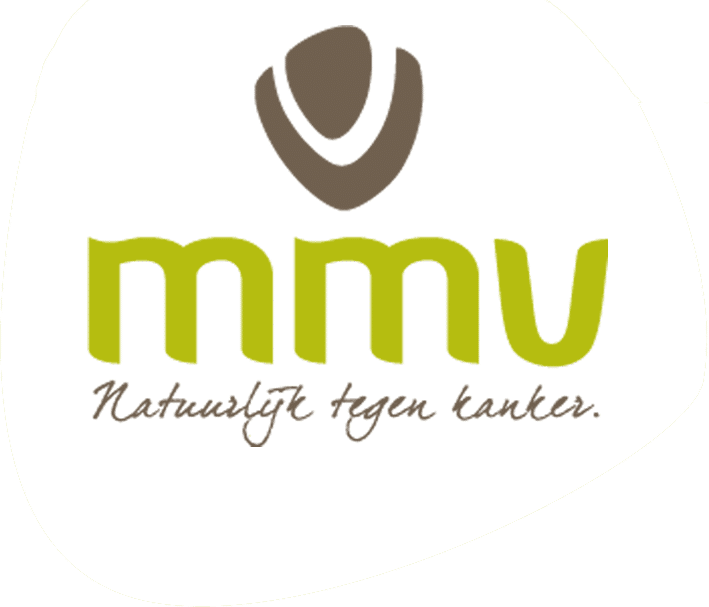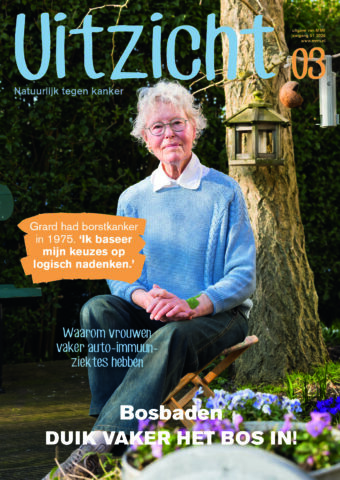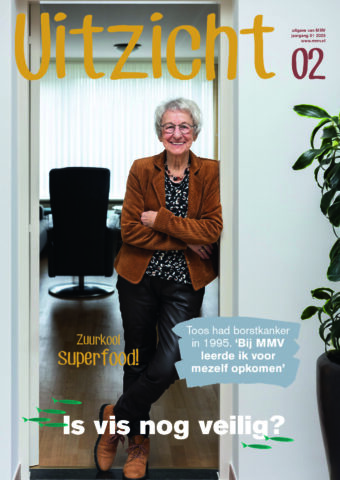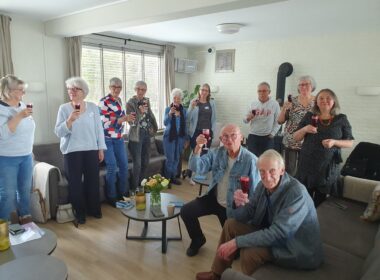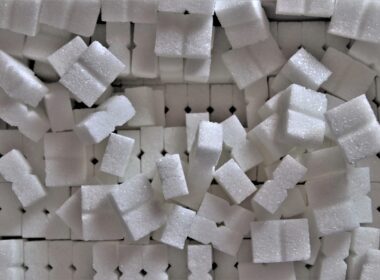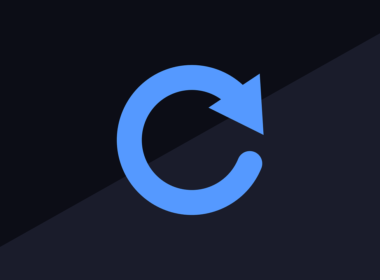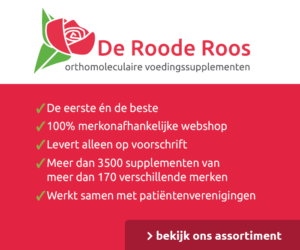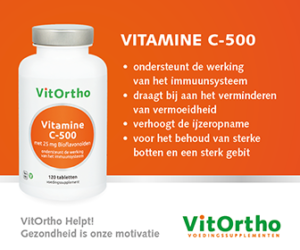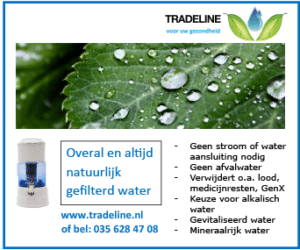Zink is een onmisbaar element voor onze gezondheid. Zinksuppletie kan de duur, frequentie en ernst van een verkoudheid gunstig beïnvloeden. Een verband tussen een ernstig beloop van COVID-19 en zinktekort is aannemelijk. Virussen houden niet van zink. Is zink het antwoord op de bestrijding van COVID-19? En wat is de samenhang met het omstreden geneesmiddel hydroxychloroquine?
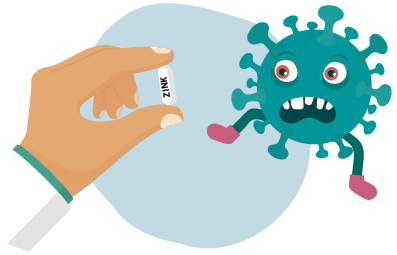
De WHO schat dat twee miljard personen in ontwikkelingslanden kampen met een zinktekort (1). Of zinktekort ook in Nederland voorkomt? Nee, zegt het Voedingscentrum: ‘Voor zover bekend komt in Nederland geen zinktekort of zinkoverschot voor’ (2). Dat blijkt uit de regelmatig gehouden ‘Voedsel Consumptie Peilingen’ (VCP’s). Hierin wordt gemeten ‘wat Nederland eet’ (3).
In deze VCP’s wordt de zinkinname van de gemiddelde Nederlander geschat en vergeleken met de ‘gemiddelde behoefte’. Wat die gegevens niet laten zien, is hoeveel zink wordt opgenomen. Dat is van belang, want de zinkopname in ons maagdarmkanaal is beperkt en varieert met wat je eet (4). Bij het vaststellen van onze zinkbehoefte is uitgegaan van een gemiddelde opname van veertig procent uit voeding (5). Zink halen we vooral uit vlees, melk en granen (3). Een stof die de zinkopname sterk remt is fytaat (4,6). Dat komt ruim voor in noten, bonen en granen (4,7). Oesters vormen de rijkste bron aan zink en de opname uit oesters is goed (6,8,9). Eet je echter 120 gram oesters samen met 120 gram maistortilla’s dan verdwijnt de zink uit die oesters regelrecht in het toilet (10,11).
Hoge zinkgehaltes treft men aan in haren, nagels, botten, lever en spieren (4,12). Zink zit vooral in onze cellen (9). We moeten het regelmatig eten, want we hebben er geen speciaal opslagsysteem voor (4,12,13), zoals voor ijzer (14) en de vitamines B12 (15) en D (16,17).
COVID-19 laat zien dat, bij paniek, onze enorme kennis van werkingsmechanismen een ondergeschikte rol speelt
Zink is betrokken bij een duizendtal enzymatische reacties en de werking van meer dan tweeduizend transcriptiefactoren (9). Dat zijn eiwitten die door binding aan ons DNA de expressie van onze genen reguleren. Behoorlijk belangrijk dus. Ook voor ons immuunsysteem (9,13,18,19). Zink wordt ook wel een ‘poortwachter van het immuunsysteem’ genoemd (18).
Waar zink die titel aan verdient?
Bij een ontstekingsreactie daalt het zinkgehalte in ons bloedplasma acuut (4,20-24). Dat is functioneel en gebeurt bijvoorbeeld ook met ijzer (25). Een mindere beschikbaarheid van zink en ijzer dwarsboomt de infecterende micro-organismen; die hebben voor hun overleving ook zink en ijzer nodig (9,13). Ook andere micronutriënten dalen bij een infectie, waaronder selenium (25) en vitamine C (26). Als de infectie lang aanhoudt krijgen wij er last van: er ontstaat een tekort (27). Voor zink en ijzer vormt zich dan een dilemma. Suppleren helpt de micro-organismen en niet-suppleren veroorzaakt een tekort.
Inmiddels staat aardig vast dat zinksuppletie een gunstige invloed heeft op de duur, frequentie en de ernst van een verkoudheid (27-32). Al langer was bekend dat zinksuppletie bij ouderen verkoudheid en infecties van de bovenste luchtwegen voorkomt (33). Het voordeel bij acute infectie geldt alleen als zink wordt ingenomen binnen 24 uur na het begin van de eerste verkoudheidssymptomen (1). Samen met selenium verbetert zink ook de immuunreactie van ouderen bij vaccinatie tegen influenza (34). Het dilemma voor ijzer neigt naar ‘niet-suppleren’ bij een infectie met micro-organismen (35,36), maar naar weldegelijk suppleren bij bloedarmoede als gevolg van chronische ziekten, zoals die kan voorkomen bij auto-immuunziektes, kanker en nierfalen (37).
COVID-19
De antivirale eigenschappen van zink maken deze voedingsstof ook tot een belangrijke speler bij een infectie met SARS-CoV-2 (32,38). Een verband tussen een ernstig beloop van COVID-19 en zinktekort is aannemelijk (32,39,39a). Gunstige effecten mogen vooral worden verwacht in de vroege fase als het virus actief is. Dat is tot maximaal negen dagen na het ontstaan van symptomen (39b).
Bekende risico’s voor een slechte uitkomst van COVID-19 zijn hoge bloeddruk, diabetes, overgewicht, hogere leeftijd en mannelijk geslacht (40). Deze condities gaan vaak samen met een zinktekort. Patiënten met hoge bloeddruk slikken vaak diuretica (‘plaspillen’) en die veroorzaken meer verlies van zink via de urine (41). Mensen met diabetes (42,43) en obesitas (44) hebben ook vaak een zinktekort. Diverse studies laten zien dat het zinkgehalte in de weefsels (bloedplasma en haren) daalt met het klimmen der jaren (45-47), vooral in mannen (39). Bij ouderen, ook in het zwaar getroffen Noord-Italië (48), wordt vaak een lage zinkstatus gemeten (45-47,49). Dit is bij hen gerelateerd aan een verslechterd immuunsysteem (45) en overlijden (46). Ook overlijden aan COVID-19 (50).
Hydroxychloroquine is een veelbesproken, en omstreden, middel voor de behandeling van COVID-19. Deze zogeheten ‘zink-ionofoor’ kan je zien als een handlanger van zink. Het is namelijk een stof die zink de cel binnenlaat (51,52). Hoge zinkgehaltes in de cel remmen de vermenigvuldiging van virussen (32,51-55). Net als bij de andere geneesmiddelen geldt dat goede timing essentieel is. Hydroxychloroquine dient in de vroege fase van de infectie te worden gegeven, en dan bij voorkeur samen met zink. Als mensen al op de Intensive Care Unit liggen is het te laat: in die late fase mag je van hydroxychloroquine alleen maar bijwerkingen verwachten (56,57). Recente gegevens van poliklinische COVID-19 patiënten laten inderdaad zien dat hydroxychloroquine het risico verlaagt van de combinatie van infectie, hospitalisatie en overlijden. En dat zonder ernstige bijwerkingen (58,59).
Het gaat nagenoeg nooit om een enkel nutriënt, maar om de samenhang tussen stoffen in een subtiel evenwicht
Is zink nu het antwoord op COVID-19? Helaas is dat onwaarschijnlijk. Het gaat nagenoeg nooit om een enkel nutriënt, maar om de samenhang tussen stoffen in een subtiel evenwicht (27,38,60-68,68a). Er zijn meestal meerdere zwakke schakels. Voor het versterken van het immuunsysteem bestaat momenteel het sterkte bewijs voor zink en de vitamines C en D (27).
Een Amerikaanse groep wetenschappers lanceerde reeds in april 2020, dus vanaf het begin van de pandemie, het ‘MATH+ -behandelprotocol’. Het betreft een combinatie van methylprednisolon (een ontstekingsremmer) en laag-moleculair heparine (een anti-stollingsmiddel) met de natuurlijke stoffen vitamine B1, vitamine C (intraveneus), vitamine D, zink en melatonine (69-71). Orthomoleculaire geneeskunde in zijn meest pure vorm! Je ‘corrigeert een defecte biochemie met de juiste moleculen of essentiële nutriënten op het juiste moment’ (62). President Donald Trump werd met diverse elementen uit dit protocol behandeld, waaronder zink, vitamine D en melatonine (72,73). In de twee centra die het MATH+-protocol gebruikten, was de sterfte aan COVID-19 gemiddeld 5,1 procent. Ze behandelden meer dan 300 patiënten. De gemiddelde sterfte in andere centra was 22,9 procent. Dat is dus een absolute risicodaling van 78 procent (71). Het standpunt van de WHO anno december 2020 is dat er geen bewijs is dat vitaminen en mineralen COVID-19 kunnen genezen en dat hydroxychloroquine geen klinische voordelen biedt (74). Van een dergelijke invloedrijke organisatie mag meer nuance worden verwacht. COVID-19 laat op pijnlijke wijze zien dat, bij paniek, onze enorme kennis van werkingsmechanismen een ondergeschikte rol speelt in een intelligente keuze van medicamenten en al helemaal geen rol speelt in de logische keuze van volstrekt normale voedingsstoffen.
Prof. dr. Frits Muskiet is emeritus hoogleraar Pathofysiologie en Klinisch Chemische Analyse. Eerdere columns van Muskiet vindt u hier. De columns zijn eerder verschenen in ons ledenmagazine Uitzicht.
MMV maakt wekelijks een selectie uit het nieuws over voeding en leefstijl in relatie tot kanker en andere medische condities.
Inschrijven nieuwsbrief
Referenties
-
1. Prasad AS. Discovery of human zinc deficiency: 50 years later. J Trace Elem Med Biol. 2012 Jun;26(2-3):66-9. doi: 10.1016/j.jtemb.2012.04.004. Epub 2012 Jun 2. PMID: 22664333.
-
2. VoedingsCentrum. Zink. Accessed 18 december 2020.
-
3. van Rossum CTM. et al. The diet of the Dutch. Results of the Dutch National Food Consumption Survey 2012-2016. National Institute for Public Health and the Environment, RIVM report 2020-0083. RIVM 2020. DOI 10.21945/RIVM-2020-0083
-
4. Maares M, Haase H. A Guide to Human Zinc Absorption: General Overview and Recent Advances of In Vitro Intestinal Models. Nutrients. 2020 Mar 13;12(3):762. doi: 10.3390/nu12030762. PMID: 32183116; PMCID: PMC7146416.
-
5. Panel on Micronutrients, Subcommittees on Upper Reference Levels of Nutrients and of Interpretation and Use of Dietary Reference Intakes, Standing Committee on the Scientific Evaluation of Dietary Reference Intakes, Food and Nutrition Board, Institute of Medicine. Dietary Reference Intakes for Vitamin A, Vitamin K, Arsenic, Boron, Chromium, Copper, Iodine, Iron, Manganese, Molybdenum, Nickel, Silicon, Vanadium, and Zinc. 2001.
-
6. Solomons NW. Dietary Sources of Zinc and Factors Affecting its Bioavailability. Food and Nutrition Bulletin Vol.22 no2, 2001 138-154. doi.org/10.1177/156482650102200204
https://journals.sagepub.com/doi/abs/10.1177/156482650102200204
-
7. Chapter 1: Overview of Zinc Nutrition. Food and Nutrition Bulletin Volume: 25 issue: 1_suppl_2, page(s): S99-S129. Issue published: January 1, 2004. doi.org/10.1177/15648265040251S204
https://journals.sagepub.com/doi/pdf/10.1177/15648265040251S204
-
8. Kloubert V, Rink L. Zinc as a micronutrient and its preventive role of oxidative damage in cells. Food Funct. 2015 Oct;6(10):3195-204. doi: 10.1039/c5fo00630a. PMID: 26286461.
-
9. Chasapis CT, Ntoupa PA, Spiliopoulou CA, Stefanidou ME. Recent aspects of the effects of zinc on human health. Arch Toxicol. 2020 May;94(5):1443-1460. doi: 10.1007/s00204-020-02702-9. Epub 2020 May 12. PMID: 32394086.
-
10. Solomons NW, Jacob RA, Pineda O, Viteri F. Studies on the bioavailability of zinc in man. II. Absorption of zinc from organic and inorganic sources. J Lab Clin Med. 1979 Aug;94(2):335-43. PMID: 458251
-
11. Bringing Back Ancient Food Preparation Traditions to Nashville, Tennessee
https://yourgreenhomestead.com/bringing-back-ancient-food-preparation-traditions-to-nashville-tn/
-
12. King JC, Shames DM, Woodhouse LR. Zinc homeostasis in humans. J Nutr. 2000 May;130(5S Suppl):1360S-6S. doi: 10.1093/jn/130.5.1360S. PMID: 10801944.
-
13. Gammoh NZ, Rink L. Zinc in Infection and Inflammation. Nutrients. 2017 Jun 17;9(6):624. doi: 10.3390/nu9060624. PMID: 28629136; PMCID: PMC5490603.
-
14. Saito H. METABOLISM OF IRON STORES. Nagoya J Med Sci. 2014 Aug;76(3-4):235-254. PMID: 25741033; PMCID: PMC4345694.
-
15. Ankar A, Kumar A. Vitamin B12 Deficiency. 2020 Jun 7. In: StatPearls [Internet]. Treasure Island (FL): StatPearls Publishing; 2020 Jan–. PMID: 28722952.
-
16. Holick MF. Vitamin D deficiency. N Engl J Med. 2007 Jul 19;357(3):266-81. doi: 10.1056/NEJMra070553. PMID: 17634462.
-
17. Abboud M, Rybchyn MS, Rizk R, Fraser DR, Mason RS. Sunlight exposure is just one of the factors which influence vitamin D status. Photochem Photobiol Sci. 2017 Mar 16;16(3):302-313. doi: 10.1039/c6pp00329j. PMID: 28139795.
-
18. Wessels I, Maywald M, Rink L. Zinc as a Gatekeeper of Immune Function. Nutrients. 2017 Nov 25;9(12):1286. doi: 10.3390/nu9121286. PMID: 29186856; PMCID: PMC5748737.
-
19. Skalny AV, Rink L, Ajsuvakova OP, Aschner M, Gritsenko VA, Alekseenko SI, Svistunov AA, Petrakis D, Spandidos DA, Aaseth J, Tsatsakis A, Tinkov AA. Zinc and respiratory tract infections: Perspectives for COVID‑19 (Review). Int J Mol Med. 2020 Jul;46(1):17-26. doi: 10.3892/ijmm.2020.4575. Epub 2020 Apr 14. PMID: 32319538; PMCID: PMC7255455.
-
20. Cousins RJ, Leinart AS. Tissue-specific regulation of zinc metabolism and metallothionein genes by interleukin 1. FASEB J. 1988 Oct;2(13):2884-90. doi: 10.1096/fasebj.2.13.2458983. PMID: 2458983.
-
21. Gaetke LM, McClain CJ, Talwalkar RT, Shedlofsky SI. Effects of endotoxin on zinc metabolism in human volunteers. Am J Physiol. 1997 Jun;272(6 Pt 1):E952-6. doi: 10.1152/ajpendo.1997.272.6.E952. PMID: 9227437.
-
22. Oakes EJ, Lyon TD, Duncan A, Gray A, Talwar D, O'Reilly DS. Acute inflammatory response does not affect erythrocyte concentrations of copper, zinc and selenium. Clin Nutr. 2008 Feb;27(1):115-20. doi: 10.1016/j.clnu.2007.10.003. Epub 2007 Nov 26. PMID: 18037540.
-
23. McDonald CM, Suchdev PS, Krebs NF, Hess SY, Wessells KR, Ismaily S, Rahman S, Wieringa FT, Williams AM, Brown KH, King JC. Adjusting plasma or serum zinc concentrations for inflammation: Biomarkers Reflecting Inflammation and Nutritional Determinants of Anemia (BRINDA) project. Am J Clin Nutr. 2020 Apr 1;111(4):927-937. doi: 10.1093/ajcn/nqz304. PMID: 32266402; PMCID: PMC7138668.
-
24. Foster M, Samman S. Zinc and regulation of inflammatory cytokines: implications for cardiometabolic disease. Nutrients. 2012 Jul;4(7):676-94. doi: 10.3390/nu4070676. Epub 2012 Jul 4. PMID: 22852057; PMCID: PMC3407988.
-
25. Zemrani B, McCallum Z, Bines JE. Trace Element Provision in Parenteral Nutrition in Children: One Size Does Not Fit All. Nutrients. 2018 Nov 21;10(11):1819. doi: 10.3390/nu10111819. PMID: 30469420; PMCID: PMC6266164.
-
26. Carr AC, Rosengrave PC, Bayer S, Chambers S, Mehrtens J, Shaw GM. Hypovitaminosis C and vitamin C deficiency in critically ill patients despite recommended enteral and parenteral intakes. Crit Care. 2017 Dec 11;21(1):300. doi: 10.1186/s13054-017-1891-y. PMID: 29228951; PMCID: PMC5725835.
-
27. Gombart AF, Pierre A, Maggini S. A Review of Micronutrients and the Immune System-Working in Harmony to Reduce the Risk of Infection. Nutrients. 2020 Jan 16;12(1):236. doi: 10.3390/nu12010236. PMID: 31963293; PMCID: PMC7019735.
-
28. Rao G, Rowland K. PURLs: Zinc for the common cold--not if, but when. J Fam Pract. 2011 Nov;60(11):669-71. PMID: 22049349; PMCID: PMC3273967.
-
29. Science M, Johnstone J, Roth DE, Guyatt G, Loeb M. Zinc for the treatment of the common cold: a systematic review and meta-analysis of randomized controlled trials. CMAJ. 2012 Jul 10;184(10):E551-61. doi: 10.1503/cmaj.111990. Epub 2012 May 7. PMID: 22566526; PMCID: PMC3394849.
-
30. Hemilä H. Zinc lozenges and the common cold: a meta-analysis comparing zinc acetate and zinc gluconate, and the role of zinc dosage. JRSM Open. 2017 May 2;8(5):2054270417694291. doi: 10.1177/2054270417694291. PMID: 28515951; PMCID: PMC5418896
-
31. Wang MX, Win SS, Pang J. Zinc Supplementation Reduces Common Cold Duration among Healthy Adults: A Systematic Review of Randomized Controlled Trials with Micronutrients Supplementation. Am J Trop Med Hyg. 2020 Jul;103(1):86-99. doi: 10.4269/ajtmh.19-0718. Epub 2020 Apr 23. PMID: 32342851; PMCID: PMC7356429.
-
32. Wessels I, Rolles B, Rink L. The Potential Impact of Zinc Supplementation on COVID-19 Pathogenesis. Front Immunol. 2020 Jul 10;11:1712. doi: 10.3389/fimmu.2020.01712. PMID: 32754164; PMCID: PMC7365891.
-
33. Prasad AS, Beck FW, Bao B, Fitzgerald JT, Snell DC, Steinberg JD, Cardozo LJ. Zinc supplementation decreases incidence of infections in the elderly: effect of zinc on generation of cytokines and oxidative stress. Am J Clin Nutr. 2007
-
34. Girodon F, Galan P, Monget AL, Boutron-Ruault MC, Brunet-Lecomte P, Preziosi P, Arnaud J, Manuguerra JC, Herchberg S. Impact of trace elements and vitamin supplementation on immunity and infections in institutionalized elderly patients: a randomized controlled trial. MIN. VIT. AOX. geriatric network. Arch Intern Med. 1999 Apr 12;159(7):748-54. doi: 10.1001/archinte.159.7.748. PMID: 10218756.
-
35. Pieracci FM, Barie PS. Iron and the risk of infection. Surg Infect (Larchmt). 2005;6 Suppl 1:S41-6. doi: 10.1089/sur.2005.6.s1-41. PMID: 19284357.
-
36. Cross JH, Bradbury RS, Fulford AJ, Jallow AT, Wegmüller R, Prentice AM, Cerami C. Oral iron acutely elevates bacterial growth in human serum. Sci Rep. 2015 Nov 23;5:16670. doi: 10.1038/srep16670. PMID: 26593732; PMCID: PMC4655407.
-
37. Wiciński M, Liczner G, Cadelski K, Kołnierzak T, Nowaczewska M, Malinowski B. Anemia of Chronic Diseases: Wider Diagnostics-Better Treatment? Nutrients. 2020 Jun 16;12(6):1784. doi: 10.3390/nu12061784. PMID: 32560029; PMCID: PMC7353365.
-
38. Pecora F, Persico F, Argentiero A, Neglia C, Esposito S. The Role of Micronutrients in Support of the Immune Response against Viral Infections. Nutrients. 2020 Oct 20;12(10):3198. doi: 10.3390/nu12103198. PMID: 33092041; PMCID: PMC7589163.
-
39. Mossink JP. Zinc as nutritional intervention and prevention measure for COVID-19 disease. BMJ Nutr Prev Health. 2020 Jun 17;3(1):111-117. doi: 10.1136/bmjnph-2020-000095. PMID: 33235974; PMCID: PMC7664497.
-
39a. Arentz S, Hunter J, Yang G, Goldenberg J, Beardsley J, Myers SP, Mertz D, Leeder S. Zinc for the prevention and treatment of SARS-CoV-2 and other acute viral respiratory infections: a rapid review. Adv Integr Med. 2020 Dec;7(4):252-260. doi: 10.1016/j.aimed.2020.07.009. Epub 2020 Aug 1. PMID: 32837895; PMCID: PMC7395818.
-
39b. Cevik M, Tate M, Lloyd O, Maraolo AE, Schafers J, Ho A. SARS-CoV-2, SARS-CoV, and MERS-CoV viral load dynamics, duration of viral shedding, and infectiousness: a systematic review and meta-analysis. Lancet Microbe 2020, Published Online November 19, 2020, https://doi.org/10.1016/S2666-5247(20)30172-5
https://www.thelancet.com/action/showPdf?pii=S2666-5247%2820%2930172-5
-
40. Wolff D, Nee S, Hickey NS, Marschollek M. Risk factors for Covid-19 severity and fatality: a structured literature review. Infection. 2020 Aug 28:1–14. doi: 10.1007/s15010-020-01509-1. Epub ahead of print. PMID: 32860214; PMCID: PMC7453858.
-
41. Little MO. Updates in nutrition and polypharmacy. Curr Opin Clin Nutr Metab Care. 2018 Jan;21(1):4-9. doi: 10.1097/MCO.0000000000000425. PMID: 29016367.
-
42. Miao X, Sun W, Fu Y, Miao L, Cai L. Zinc homeostasis in the metabolic syndrome and diabetes. Front Med. 2013 Mar;7(1):31-52. doi: 10.1007/s11684-013-0251-9. Epub 2013 Feb 6. PMID: 23385610.
-
43. Barman S, Srinivasan K (2020). Diabetes and zinc dyshomeostasis: Can zinc supplementation mitigate diabetic complications?, Critical Reviews in Food Science and Nutrition, DOI: 10.1080/10408398.2020.1833178
https://www.tandfonline.com/doi/full/10.1080/10408398.2020.1833178?scroll=top&needAccess=true
-
44. Banach W, Nitschke K, Krajewska N, Mongiałło W, Matuszak O, Muszyński J, Skrypnik D. The Association between Excess Body Mass and Disturbances in Somatic Mineral Levels. Int J Mol Sci. 2020 Oct 3;21(19):7306. doi: 10.3390/ijms21197306. PMID: 33022938; PMCID: PMC7582962.
-
45. Haase H, Mocchegiani E, Rink L. Correlation between zinc status and immune function in the elderly. Biogerontology. 2006 Oct-Dec;7(5-6):421-8. doi: 10.1007/s10522-006-9057-3. PMID: 16953331.
-
46. Malavolta M, Giacconi R, Piacenza F, Santarelli L, Cipriano C, Costarelli L, Tesei S, Pierpaoli S, Basso A, Galeazzi R, Lattanzio F, Mocchegiani E. Plasma copper/zinc ratio: an inflammatory/nutritional biomarker as predictor of all-cause mortality in elderly population. Biogerontology. 2010 Jun;11(3):309-19. doi: 10.1007/s10522-009-9251-1. Epub 2009 Oct 10. PMID: 19821050.
-
47. Yasuda H, Tsutsui T. Infants and elderlies are susceptible to zinc deficiency. Sci Rep. 2016 Feb 25;6:21850. doi: 10.1038/srep21850. PMID: 26912464; PMCID: PMC4766432.
-
48. Savarino L, Granchi D, Ciapetti G, Cenni E, Ravaglia G, Forti P, Maioli F, Mattioli R. Serum concentrations of zinc and selenium in elderly people: results in healthy nonagenarians/centenarians. Exp Gerontol. 2001 Feb;36(2):327-39. doi: 10.1016/s0531-5565(00)00218-7. PMID: 11226746.
-
49. Pepersack T, Rotsaert P, Benoit F, Willems D, Fuss M, Bourdoux P, Duchateau J. Prevalence of zinc deficiency and its clinical relevance among hospitalised elderly. Arch Gerontol Geriatr. 2001 Nov-Dec;33(3):243-53. doi: 10.1016/s0167-4943(01)00186-8. PMID: 15374021.
-
50. Vogel-González M, Talló-Parra, M, Herrera-Fernández V, Pérez-Vilaró G, Chillón M, Nogués X, Gómez-Zorrilla S, López-Montesinos I, Villar J, Sorli-Redó ML, Horcajada JP, García-Giralt N, Pascual J, Díez J, Vicente R, Güerri-Fernández R. Low zinc levels at clinical admission associates with poor outcomes in COVID-19. MedRxiv 2020
https://www.medrxiv.org/content/10.1101/2020.10.07.20208645v1.full.pdf
-
51. te Velthuis AJ, van den Worm SH, Sims AC, Baric RS, Snijder EJ, van Hemert MJ. Zn(2+) inhibits coronavirus and arterivirus RNA polymerase activity in vitro and zinc ionophores block the replication of these viruses in cell culture. PLoS Pathog. 2010 Nov 4;6(11):e1001176. doi: 10.1371/journal.ppat.1001176. PMID: 21079686; PMCID: PMC2973827.
-
52. Sharma P, Reddy PK, Kumar B. Trace Element Zinc, a Nature's Gift to Fight Unprecedented Global Pandemic COVID-19. Biol Trace Elem Res. 2020 Nov 10:1–9. doi: 10.1007/s12011-020-02462-8. Epub ahead of print. PMID: 33170448; PMCID: PMC7654355.
-
53. Read SA, Obeid S, Ahlenstiel C, Ahlenstiel G. The Role of Zinc in Antiviral Immunity. Adv Nutr. 2019 Jul 1;10(4):696-710. doi: 10.1093/advances/nmz013. PMID: 31305906; PMCID: PMC6628855.
-
54. Skalny AV, Rink L, Ajsuvakova OP, Aschner M, Gritsenko VA, Alekseenko SI, Svistunov AA, Petrakis D, Spandidos DA, Aaseth J, Tsatsakis A, Tinkov AA. Zinc and respiratory tract infections: Perspectives for COVID‑19 (Review). Int J Mol Med. 2020 Jul;46(1):17-26. doi: 10.3892/ijmm.2020.4575. Epub 2020 Apr 14. PMID: 32319538; PMCID: PMC7255455.
-
55. Pal A, Squitti R, Picozza M, Pawar A, Rongioletti M, Dutta AK, Sahoo S, Goswami K, Sharma P, Prasad R. Zinc and COVID-19: Basis of Current Clinical Trials. Biol Trace Elem Res. 2020 Oct 22:1–11. doi: 10.1007/s12011-020-02437-9. Epub ahead of print. PMID: 33094446; PMCID: PMC7580816.
-
56. Risch HA. Early Outpatient Treatment of Symptomatic, High-Risk COVID-19 Patients That Should Be Ramped Up Immediately as Key to the Pandemic Crisis. Am J Epidemiol. 2020 Nov 2;189(11):1218-1226. doi: 10.1093/aje/kwaa093. PMID: 32458969; PMCID: PMC7546206.
-
57. Doctors Pen Open Letter To Fauci Regarding The Use Of Hydroxychloroquine for Treating COVID-19, accessed 20 december 2020
-
58. Prodromos C, Rumschlag T. Hydroxychloroquine is effective, and consistently so when provided early, for COVID-19: a systematic review. New Microbes New Infect. 2020 Nov;38:100776. doi: 10.1016/j.nmni.2020.100776. Epub 2020 Oct 5. PMID: 33042552; PMCID: PMC7534595.
-
59. Ladapo JA, McKinnon JE, McCullough PA. Randomized Controlled Trials of Early Ambulatory Hydroxychloroquine in the Prevention of COVID-19 Infection, Hospitalization, and Death: Meta-Analysis. medRxiv, Posted September 30, 2020. doi: https://doi.org/10.1101/2020.09.30.20204693
https://www.medrxiv.org/content/10.1101/2020.09.30.20204693v1
-
60. Calder PC. Nutrition, immunity and COVID-19. BMJ Nutr Prev Health. 2020 May 20;3(1):74-92. doi: 10.1136/bmjnph-2020-000085. PMID: 33230497; PMCID: PMC7295866.
-
61. Calder PC, Carr AC, Gombart AF, Eggersdorfer M. Optimal Nutritional Status for a Well-Functioning Immune System Is an Important Factor to Protect against Viral Infections. Nutrients. 2020 Apr 23;12(4):1181. doi: 10.3390/nu12041181. PMID: 32340216; PMCID: PMC7230749.
-
62. Butters D, Whitehouse M. COVID-19 and nutriceutical therapies, especially using zinc to supplement antimicrobials. Inflammopharmacology. 2020 Nov 16:1–5. doi: 10.1007/s10787-020-00774-8. Epub ahead of print. PMID: 33196946; PMCID: PMC7667214.
-
63. Jovic TH, Ali SR, Ibrahim N, Jessop ZM, Tarassoli SP, Dobbs TD, Holford P, Thornton CA, Whitaker IS. Could Vitamins Help in the Fight Against COVID-19? Nutrients. 2020 Aug 23;12(9):2550. doi: 10.3390/nu12092550. PMID: 32842513; PMCID: PMC7551685.
-
64. Holford P, Carr AC, Jovic TH, Ali SR, Whitaker IS, Marik PE, Smith AD. Vitamin C-An Adjunctive Therapy for Respiratory Infection, Sepsis and COVID-19. Nutrients. 2020 Dec 7;12(12):E3760. doi: 10.3390/nu12123760. PMID: 33297491.
-
65. Derbyshire E, Delange J. COVID-19: is there a role for immunonutrition, particularly in the over 65s? BMJ Nutr Prev Health. 2020 Apr 16;3(1):100-105. doi: 10.1136/bmjnph-2020-000071. PMID: 33230498; PMCID: PMC7211076.
-
66. Alexander J, Tinkov A, Strand TA, Alehagen U, Skalny A, Aaseth J. Early Nutritional Interventions with Zinc, Selenium and Vitamin D for Raising Anti-Viral Resistance Against Progressive COVID-19. Nutrients. 2020 Aug 7;12(8):2358. doi: 10.3390/nu12082358. PMID: 32784601; PMCID: PMC7468884.
-
67. Jayawardena R, Sooriyaarachchi P, Chourdakis M, Jeewandara C, Ranasinghe P. Enhancing immunity in viral infections, with special emphasis on COVID-19: A review. Diabetes Metab Syndr. 2020 Jul-Aug;14(4):367-382. doi: 10.1016/j.dsx.2020.04.015. Epub 2020 Apr 16. PMID: 32334392; PMCID: PMC7161532.
-
68. Shakoor H, Feehan J, Al Dhaheri AS, Ali HI, Platat C, Ismail LC, Apostolopoulos V, Stojanovska L. Immune-boosting role of vitamins D, C, E, zinc, selenium and omega-3 fatty acids: Could they help against COVID-19? Maturitas. 2021 Jan;143:1-9. doi: 10.1016/j.maturitas.2020.08.003. Epub 2020 Aug 9. PMID: 33308613; PMCID: PMC7415215.
-
68a. Raiten DJ, Sakr Ashour FA, Ross AC, Meydani SN, Dawson HD, Stephensen CB, Brabin BJ, Suchdev PS, van Ommen B; INSPIRE Consultative Group. Inflammation and Nutritional Science for Programs/Policies and Interpretation of Research Evidence (INSPIRE). J Nutr. 2015 May;145(5):1039S-1108S. doi: 10.3945/jn.114.194571. Epub 2015 Apr 1. PMID: 25833893; PMCID: PMC4448820.
-
69. EVMS COVID-19 MANAGEMENT PROTOCOL Developed and Updated by Paul Marik, MD, FCP (SA), FRCP (C), FCCP, FCCM. Professor of Medicine, Chief of Pulmonary and Critical Care Medicine Eastern Virginia Medical School December 17th, 2020, Accessed 20 december 2020
-
70. Marik PE, Kory P, Varon J, Iglesias J, Meduri GU. MATH+ protocol for the treatment of SARS-CoV-2 infection: the scientific rationale. Expert Rev Anti Infect Ther. 2020 Aug 18:1-7. doi: 10.1080/14787210.2020.1808462. Epub ahead of print. PMID: 32809870.
-
71. Kory P, Meduri GU, Iglesias J, Varon J, Marik PE. Clinical and Scientific Rationale for the "MATH+" Hospital Treatment Protocol for COVID-19. J Intensive Care Med. 2020 Dec 15:885066620973585. doi: 10.1177/0885066620973585. Epub ahead of print. PMID: 33317385.
-
72. The MATH+ Protocol & President Trump's CV-19 Treatment. YouTube. Sean Burke Show. In this interview, Dr. Kory talks about aspects of Trump's treatment. Accessed 20 december 2020.
-
73. Trump's COVID-19 Management Explained. YouTube. Drbeen Medical Lectures. Accessed 20 december 2020
-
74. World Health Organization. Coronavirus disease (COVID-19) advice for the public: Mythbusters; 23 november 2020; Accessed 20 december 2020
